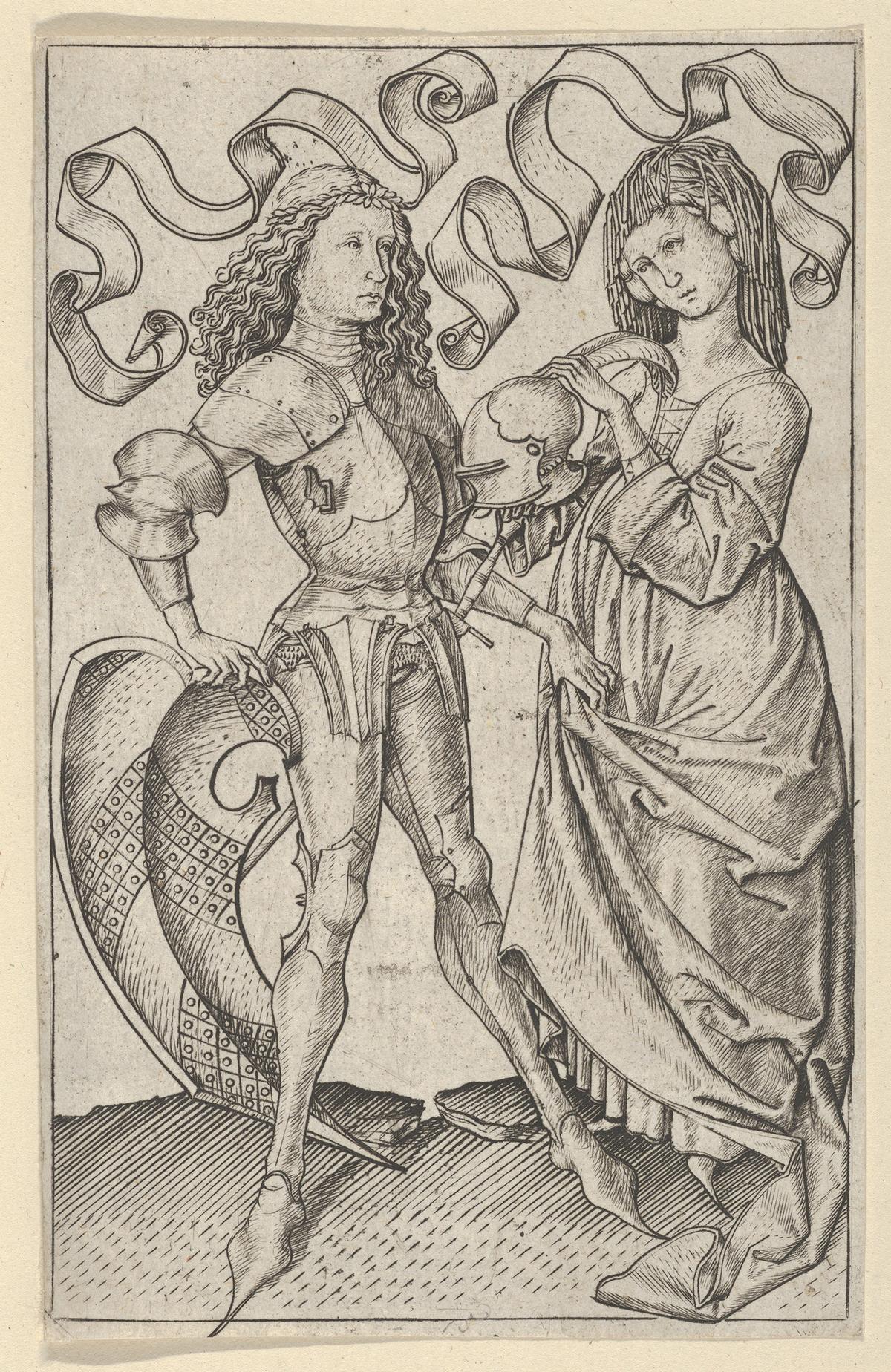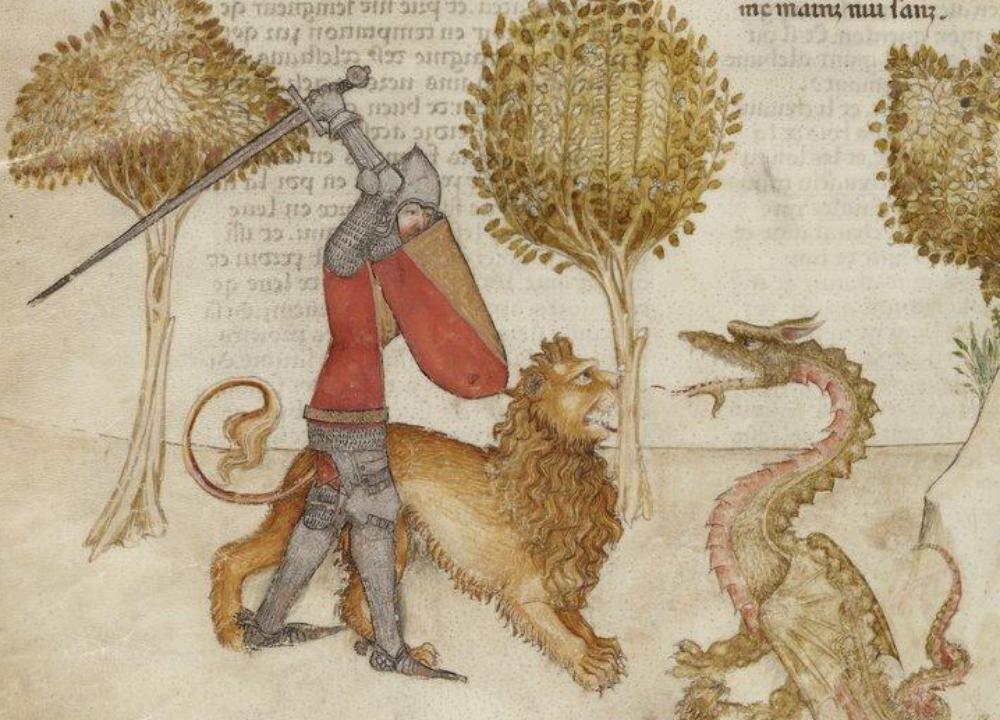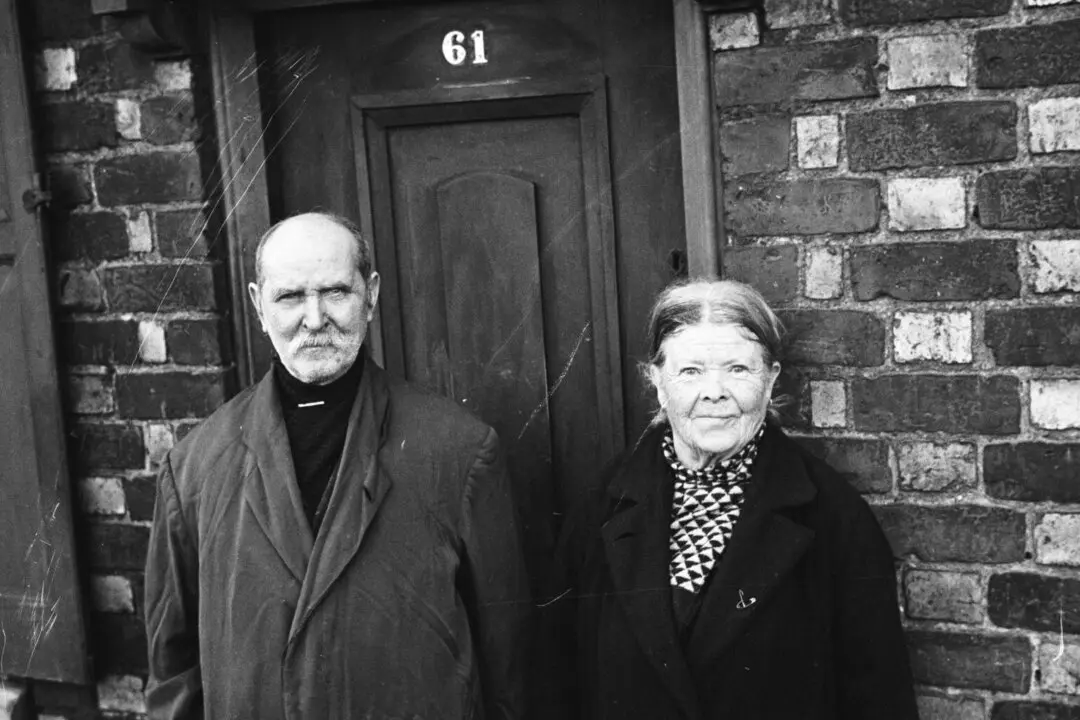One moment Yvain has it all: a kingdom, a beautiful wife, wealth, physical prowess—even a magical spring of water. The next moment, he has lost everything, including his sanity, and he runs naked through the forest, oblivious to everything except his grief. How did this knight of King Arthur’s court fall so catastrophically?
A Self-Centered Knight

"The Knight and the Lady," mid-15th century, by Master ES. Engraving. The Metropolitan Museum of Art, New York City. Public Domain






